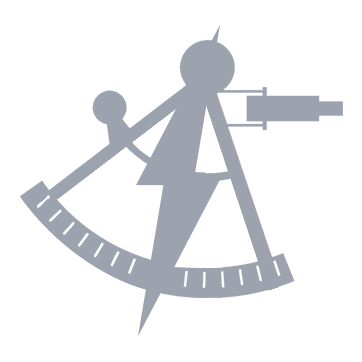Stardate 2395.3
Redundant star system surveys were one of the many exciting tasks passed on to the aging exploratory cruiser Arcturusthroughout the latter few decades of her service. The old Ambassador-class vessel had seen a lot in her day, but by the time Tristan Hawthorne was serving on her, she was in her twilight days. As a linguistic anthropologist, much of his time was spent analyzing findings forwarded from other ships on more exciting assignments than his own. Imagine his surprise, then, to be called for an away mission.
They beamed down to a barely habitable Class L moon orbiting a gas giant last surveyed in the era of Those Old Scientists like Pike, Kirk, and Spock. It was a rough trek in breathing gear through a cave system that had gone unstudied last time, but after several hours of spelunking, they found an ancient cache that matched the material signature of a Generation Ship recovered by the starships Cerritos and Merced over a decade prior.
While they had a partial language map for the race that left the cache behind, it was Hawthorne’s work that led them to uncover a cylinder of the mysterious terraforming emulsion which had nearly led to the destruction of the Merced.
“The cylinder is stable enough to transport to the ship, Commander,” Hawthorne reported to their team leader, Larus Alesser. “We should get it back to a starbase, though. I don’t think we have the equipment onboard to keep it in stasis, let alone study it.”
“We’ll get you a pilot, then, Ensign,” Alesser replied.
“Me?!” Hawthorne exclaimed.
“You discovered the sample. You should be the one to keep the chain of custody back to Starbase Bravo.”
Mollified by that thought, Hawthorne beamed with the container of terraforming emulsion back to the Arcturus, where engineering quickly outfitted one of their equally ancient Type 7 shuttles for the courier run. Just as Hawthorne was locking everything down, someone charged up the boarding ramp, and he looked up to see Ensign Paulo Costa.
“You,” the two of them said together. “Unbelievable,” they added, still in sync.
“I’m ready to go whenever you are,” Hawthorne said.
“Good—let’s get this over with, blondie,” Costa said.
It was a two-day trip from where the Arcturus was conducting her survey back to Starbase Bravo. The two ensigns spent that trip in stony silence, which was preferable to the bickering that they constantly did back in their Academy days. Though they had known each other for over three years by that point and barbs had been traded by both sides equally, Hawthorne knew that he was responsible for starting the feud in the first place and it was painful that he couldn’t figure out some stratagem to end it once and for all. Anytime he thought too hard about that, though, Costa did something to earn a new wave of his ire.
To save on acrimony, Hawthorne spent the majority of their trip in the aft compartment, monitoring the containment field that held the terraforming emulsion in near-stasis for the journey. They were just barely halfway through their two day journey when Hawthrone was knocked to the floor as the red alert lights turned on and he felt the shuttle being pulled out of warp. The containment field generator was sparking and Hawthorne had to drag himself back to the control panel, where he was able to separate the field’s power supply from the shuttle’s and engage a self-contained battery backup. Whatever was going on had ionized the propulsion system.
“Get up here!” Costa shouted over the comm.
“What’s going on?” Hawthorne asked, having to brace himself on whatever he could grab to move up to the cockpit and slide into the seat next to Costa’s.
“We’ve been clipped by the edge of an ion storm,” Costa explained. “How’s the cargo?”
“I separated the containment field from the shuttle’s systems so it’s stable. I’m fine, too,” Hawthorne snapped. “Communications are down.”
“So is almost everything else. I’m trying to level us out with manual control,” Costa said.
Alarms continued to blare and Hawthorne tapped into the remote sensors in the aft compartment. His eyebrows raised immediately when he saw spiking levels in the containment field. He’d averted catastrophe by separating the power systems, but there was now no longer sufficient power to keep the field intact for very long.
“We’re losing containment. I need to seal the aft compartment and flood it with parizene gas, or we’re going to be terraformed in about 3 minutes,” Hawthorne said, struggling to his feet to go to the bulkhead.
“I’ll do what I can to stabilize the shuttle,” Costa said while Hawthorne worked.
Hawthorne found the emergency override and established a forcefield between the two sections of the shuttle. Just as Costa brought the shuttle to station-keeping, Hawthorne activated the emergency gas dispersal valve. His heart was pounding as he flounced back into the co-pilot’s station.
“Good work,” they said at the same time.
Genuinely impressed by Costa’s talents, Hawthorne allowed himself to chuckle.
“Well, good job saving us. But without comms or engines, we’re pretty much stuck here,” Hawthorne noted.
“I guess we’re about to figure out how well you were paying attention in basic engineering, T.,” Costa said. “Considering most of the engineering supplies are on the other side of that door, I guess we’ll have to make do with what’s up here.”
It took the two ensigns several hours to make the necessary repairs to limp close enough to Starbase Bravo for their emergency transponder to be picked up. They were swooped up by one of the frigates guarding the Mellstoxx sector within minutes and delivered to home base. The deck officer barely batted an eye at their story before loading them into a brand-new Type-12 shuttle and sending them back toward the Arcturus.
The begrudging sense of respect they developed for one another during that mission evaporated as soon as they were back home. Second Officer Alesser was the one who had the responsibility for taking their report, and they were in his office for about 20 seconds before the finger pointing started.
“If he’d been in the cockpit, I could have had some advance warning of the storm,” Costa accused.
“If I had been in the cockpit, I wouldn’t have had a chance to separate the containment field before it was ionized!” Hawthorne replied.
The bickering spiraled as if there wasn’t a senior officer present at all.
“Enough!” Alesser shouted. “I was about to say that I’d entered commendations in both of your jackets, but clearly you also need a note about your people skills. Dismissed!”
The two ensigns scrambled out of the second officer’s office.
“Stay away from me!” they exclaimed.
Stardate 2401.4
By 2401, Hawthorne and Costa had long since stopped speaking in unison in moments of stress, but the bickering hadn’t stopped. Because of the patronage of various officers, they seemed to end up on the same ship and in close quarters more often than not. Hawthorne took their situation as proof that God definitely existed and she was as cruel as they came.
Thankfully, the eleven hours after lunch continued without incident or much in the way of conversation. Andretti would occasionally make small talk and almost seemed sweet, but Hawthorne got the sense that their fellow lieutenant was bored by their assignment. Fox kept to himself in the aft compartment, likely continuing to get blazed out of his mind on snake leaf—at least to whatever level of stimulation he was permitted by the regulations.
“Eyes front. We’re about to drop out of warp,” Costa said from his station on the lower level.
Fox was barely in his seat bringing with him the stench of an Orion flea market before Hawthorne had something much more interesting to focus on: the streaking stars in front of the runabout were replaced with the spiraling illuminated clouds of a stellar nursery.
“Beginning search pattern,” Costa said.
“Sensors ready,” Hawthorne confirmed.
Based on the simulations they had run, Hawthorne could tell they were in the right place to find Cnidarians based on the way their color patterns would look in this environment. They’d be able to stand out to one another like blazing bonfires against white snow.
“No threats in the area,” Andretti reported. “Though, obviously, we have limited visibility into the nebula.”
“We’ll be careful, then,” Costa said.
In other contexts, localizing Farpoint Cnidarians to any given area would make them easy to find because of their energy patterns, but the stellar nursery had enormous amounts of background energy, and they were about to search through hundreds of thousands of cubic kilometers for a comparative needle in a haystack.
They went through the standard search pattern for hours before it was Fox of all people who spoke up.
“I’m reading a signal that looks like the one put out by the Ferengi thought makers,” Fox said.
“We’ve found them, then. We should signal the Arcturus immediately,” Andretti said.
“All we’ve found so far is a signal. It could be a decoy,” Hawthorne reminded him.
“Agreed. We need to see something before we call in the cavalry. Send me the coordinates, Fox.”
“Done.”
“Let’s go find us some space cnidarianoids,” Costa said, turning around to wink at Hawthorne in a way that made the scientist feel some very confused sensations, as it proved the mindless himbo had actually been listening to what he was saying earlier.
“I recommend we minimize our power signature, at least,” Andretti said.
“Do it.”
Slowly but surely, the Segnius Flyer navigated through the stellar nursery to the coordinates that Fox had picked up. The immense amount of matter and energy in the region made it difficult to keep the craft on course without expending so much power that they’d either risk draining their fuel cells or giving away their position. Hawthorne had to admit that Costa was demonstrating a tremendous amount of skill in keeping their approach stealthy, though he wouldn’t have said that out loud. As they came around a dense gas pocket, Hawthorne gasped.
“That’s definitely a Farpoint Cnidarian,” he said. “But… Something is very wrong,” he said.
In front of them, there was the tell-tale shape of a Farpoint Cnidarian, but it was glowing red, as well as pulsing green in an almost random set of patterns across its ‘skin.’ Hawthorne couldn’t identify the nature of the pulses, but it was nothing like the creature’s natural language. There was little time to study it, though, as something even more ominous was just on the edges of their view: a ship.
“Threat vessel detected of unknown configuration. It has substantial armaments,” Andretti replied.
“It has the thought makers. I’m sure of it,” Fox confirmed.
On his own screen, Hawthorne reviewed the passive sensor logs detailing the four-winged, claw-like craft. It resembled some Son’a designs he’d seen before, but this was clearly something novel. Isolytic weapons, plasma torpedoes, and a dozen other things he couldn’t identify.
“We need backup,” Hawthorne said, his heart pounding. “Though, I’m not sure even the Arcturus could take this thing out.”
“What’s it doing?” Costa asked.
“It’s controlling the Cnidarian,” Andretti said.
The question was too obvious, so Hawthorne looked back at his sensors and refocused them on the cnidarian. The creature was making something or lots of somethings. Components for something huge were pouring out of an aperture on its lower surface.
“It’s building something,” Hawthorne clarified.
“Yeah. We need to signal home. Hold tight,” Costa replied before doing a swift loop and heading them straight out of the nebula to summon help.
As they moved out of the nebula, Hawthorne could not help but feel that the green lights they had seen were familiar somehow. They didn’t call to mind anything linguistic that he could think of, but they were a clue that was tugging at something just beneath his conscious mind’s ability to access. He hoped that the smarter minds left back aboard the Arcturus would be able to solve it—or at the very least free that creature from its obvious servitude.

 Bravo Fleet
Bravo Fleet








